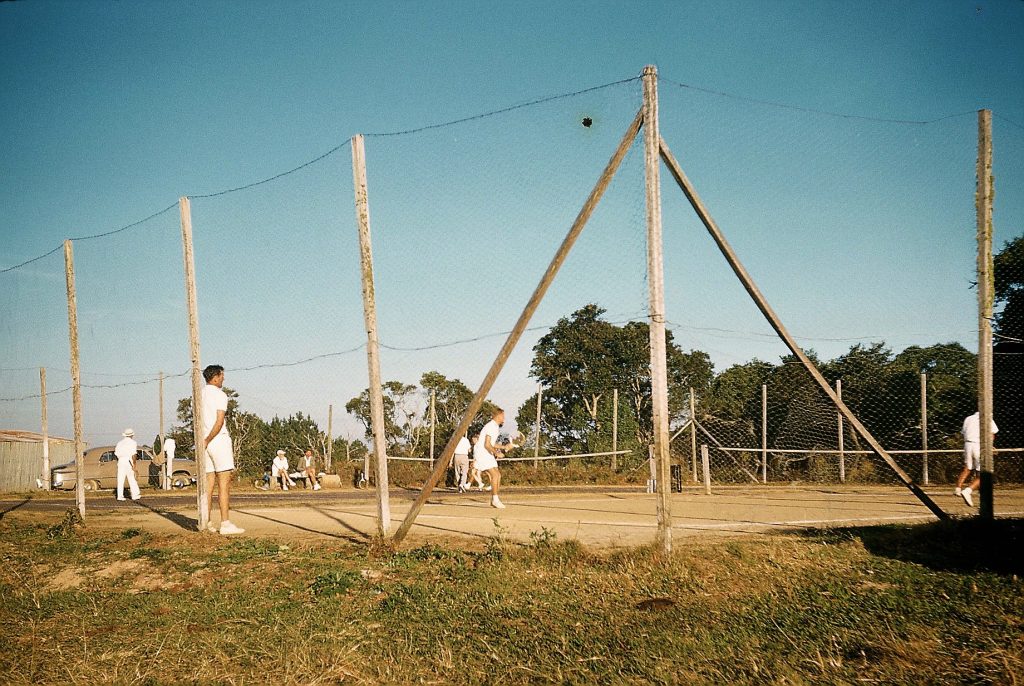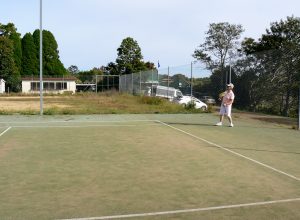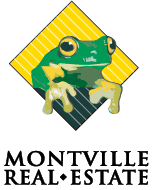The History of the Montville Sports and Recreation Grounds
Montville Sports and Recreation
The Montville Sports and Recreation Ground, formerly the Montville Recreation Ground, is situated at 230 – 238, Balmoral Road, some three kilometres south of Montville Village. It was established in 1926 as a public ground built by the community and, as such, fell outside the financial support of the Maroochy Shire Council. Until 1992, it was managed by a committee of 5 trustees. The trusteeship of the ground was transferred to the Montville Village Association (MVA) by a public referendum and the MVA has managed it, without direct funding support from the Sunshine Coast Regional Council, for and on behalf of the Montville Community, ever since.
Before World War 1, the Village Green (formerly The Reserve – for spelling, turning and yoking bullock teams) was the centre of sport and recreation in Montville. The School of Arts Hall (1903) housed a library and hosted dances and concerts. Cricket and Basketball (Netball) were played on the Village Green which was also the venue for Maypole Dances and games. However, when the Montville Patriotic Committee built Memorial Gates in 1921 on the northern side of the road reserve in front of the hall to acknowledge the sacrifice of Montville men in World War 1; and planted 6 Memorial Fig Trees opposite in 1923 to recognise those fallen; the size of the Village Green available for sport was greatly reduced and its focus changed from being a sporting venue to a cultural one, although basketball continued to be played on the courts on the Green.
In 1925, a committee was formed to locate and purchase an alternative site on which to create a designated sports and recreation ground. The land the committee felt would be most suitable was owned by Joseph James Thomas and was part of Portion 11V first selected by Thorvald Weitemeyer in 1887. Fronting Balmoral Road and sitting on an east/west ridge roughly parallel to Mill Hill Road, the block was big enough to easily house a cricket/football oval, and tennis courts – these being the main sports of interest in the community. (Note that the centralisation of the Basketball Competition in Nambour saw the demise of basketball in Montville in 1932.) Joseph Thomas agreed to sell this section of land for £500. The committee estimated it would cost a further £500 to level the ground and establish the oval and courts.
The committee approached a bank, the English, Scottish and Australian Bank which had a presence in Montville at the time, to borrow £1,000 for the project. Guarantors were needed to cover any default in loan repayments and ten people agreed to stand as guarantors: J. Ruddy; T. H. Brown; J. J. Thomas; H. O. Dick; A. Bowser; H. T. Young; W. Skene; R. H. Goodwin; J. Aird and Mrs. F. J. (Jane) Thompson (Elston). A committee of five trustees was formed to manage the loan and the development and operation of The Montville Recreation Ground – the Recreation Ground Committee. The first five trustees appointed were: J. Ruddy; T. H. Brown; J. J. Thomas; R. H. Goodwin and H. O. Dick.
The Nambour Chronicle and North Coast Advertiser records the remarkable success of this group in bringing the ‘Recreation Grounds’ to fruition. In September 1926, the Grand Recreation Ground Carnival was held on the Village Green and in the School of Arts Hall to raise funds for the project. The carnival included a procession of decorated cars and floats along Main Street from the post office to the Village Green; lunch in the hall; a challenge basketball match between arch rivals Nambour and Montville followed by a variety of games and competitions for the youngsters; culminating with a dinner, concert and dance for the adults. There was considerable excitement and huge community support for the project.
The ‘Chronicle’ reported that by 10th February 1927, the first tennis court was completed with the second still to be surfaced with Nundah Gravel at a total cost of £100. Tennis enthusiasts had their first hit out to christen the new court and formed an interim committee to form the Montville Tennis Club, including G. Butt; J. Aird; W. Dart; R. Goodwin and V. Downes. By the 16th February, the sports ground had been excavated and levelled but still required the removal of a number of tree stumps, the outskirts brush cut and harrowing and seeding to be completed. In July, the Recreation Ground Committee decided to erect a new fence along the southern boundary of the grounds so stock could be kept out allowing the ground to settle from grading and the grass to take. As well, in July, an interim committee was formed to establish a cricket club, chaired by T. H. Brown; while later that year (1927) the Montville Football Club was established.
The first Montville Team to record success was the football team which won the North Coast Rugby League B Grade Premiership in 1928; although the Tennis Club, with competition and social games, quickly attracted the most support. In November, 1929, the Recreation Grounds Committee took advantage of the opening of the Palmwoods to Montville Road to hold a Monster Carnival and Sports Gathering at the Recreation Grounds. References to the Queens Birthday Sport Carnival in the 1940s and 50s suggest that the grounds hosted regular sport and recreation carnivals over several decades. The 1954 Queens Birthday Sports Carnival featured tennis, table tennis, a 100 yard dash, clock golf, football kicking, rooster catching, throwing ping pong balls into a bucket and a variety of races and games for children. There were a range of stalls, a doll dressing competition and a chocolate wheel.
The depression and the advent of WW2 had an impact on these sporting clubs and the use of the recreation grounds. An entrance fee of two shillings became challenging for many families as the depression tightened. In 1934, the football club closed primarily because it lacked the numbers to meet a new requirement that clubs must field an A team before it fielded a B team.
Although competitive cricket was suspended during WW2, the Reserve Grade team captained by Vince Sinclair became one of Montville’s most successful teams during the 40s and 50s. Montville cricket became so competitive that it attracted young teenage players like Rob Nicholl, David Farmer and Richard Barnett who established the fearsome reputation of Montville bowlers. By the 1960s, Montville was able to field two teams in the competition. Unfortunately, the cricket club folded in the mid-1970s and its records have been lost.
The Montville Tennis Club was also suspended during WW2. It was reformed in March, 1946 but after a brief period of popularity community interest dropped off. By the mid-1990s, the then President, Les Gittins, and Lois McVitty were fighting for funding to restore the aging courts as a way of attracting more people to tennis. The Montville Sports and Recreation Ground, as it was now called, had three courts by then but the third court was not fit for play and the other two were old ant-bed courts that required a lot of preparation and maintenance. They wanted to turn the number 1 court into an artificial grass court with lights to provide a more attractive facility. Although they were not successful, a later committee did get funding for these upgrades in 1997, but the decline in player numbers continued. Unfortunately, the club records are incomplete so details are patchy but, by the time the tennis club folded in 2013, it was down to only a handful of active members.

Tennis in the 1960s

One Functional Court, 2014
Despite the impact of the depression, the Recreation Ground Committee paid off its mortgage early, in 1939. There was a night of celebration at the School of Arts Hall where the ashes of the mortgage papers were auctioned off: with Private Joe Foster winning the bidding with sixpence. It was intended that the ashes would become The Montville Ashes – the cricket trophy for local teams to play for, but there are no records of this becoming a tradition. Over time, the trustees of the sports ground changed and by the 1980s the five trustees were: Les Gittins; Chris Hooper; Ian Russell; Peter Glover and Des McCulloch. However, in 1992, the surviving trustees, Ian Drysdale; Russell Lesley; Tom Skittens; Chris Hooper and Des McCulloch sought the support of 75% of 100 community members to transfer the trusteeship of the Montville Sports and Recreation Ground to the Montville Village Association (MVA). Their resolution was successful. It was considered that, as an incorporated, not-for-profit, community association the MVA would have provenance and expertise to own and manage the sports ground in trust for and on behalf of the community.
Acquiring the sports ground as an asset placed a huge financial burden on the MVA. The sports ground was not generating any sort of income and maintenance and insurance costs were quite high. The MVA struggled to meet these costs and community use of the ground was minimal, with only the tennis club operating. For a brief period after 1992, the local Maroochy Council foreman for Montville approved Council workmen to mow the oval in return for Council dumping green waste over the southern escarpment to help stabilise it. However, this was an ‘off-the-record’ local arrangement that did not pass the first Council audit and stopped, leaving the MVA with two problems. It now had to take over the mowing of the oval and the green waste dumped contained large quantities of weed species like tobacco bush, lantana and morning glory which proliferated – invading neighbouring land sites and the sports ground itself. For the rest of the 90s, MVA volunteers spent countless hours mowing the oval while Len Gorsch regularly slashed the ‘weeds’ outside the fence when he had work on properties near the sports ground. Maintaining the gravel access road into the sports ground, which got washed out every wet season, was an ongoing, crippling expense.
Potential relief arrived in 2001 when two new clubs approached the MVA to base themselves at the sport ground. The Range United Soccer Club, a club for children’s soccer, wanted to relocate from Mapleton and the Blackall Range Woodcrafters Guild (the Woodies) wanted to relocate from the Potters Shed on Western Avenue which it had outgrown. A grant allowed the MVA to remove the concrete cricket pitch and grade the oval, as well as to erect some fencing to contain wayward soccer balls. The Woodies put forward a proposal to build a special purpose shed in an unused back corner of the ground. With MVA approval, the Woodies’ new shed/club house was built, opening on 10th March, 2002. Informal lease agreements were entered into. However, although usage improved, income didn’t as neither club was in a financial position to pay anything more than a nominal ‘peppercorn rent’. Although the soccer club took over the mowing of the oval during the playing season and the Woodies mowed around its facility and helped maintain the road, the MVA was struggling to provide the maintenance required and now expected by the two new clubs. Regular working parties barely managed the basics.
Then, in 2004, the MVA entered a particularly difficult period of governance. A major development proposal, the Links Montville Residential Golf Development, divided the community and threatened community coherence. The MVA was caught in the middle of very angry conflict and was unable to negotiate reasonable, informed discussion. Rival, ‘for and against’ parties petitioned the State government and made inflammatory claims through the media and in a series of public meetings. Although the State intervened to stop the development, the process had fractured the community and the MVA lost status and trust for its failure to better manage the issue. At the same time, a lack of available finance had resulted in the continued poor maintenance of the sports ground, alienating neighbours and the new clubs. By 2008, it became evident that major action was needed to establish a new relevance of the sports ground so that some degree of financial viability could be created or the MVA would have to face the possibility of relinquishing ownership.
From 2008 to 2014, the MVA struggled with how to make the sports ground viable and relevant to the Montville Community. The closure of the tennis club meant that the grounds were no longer being used by any local residents for sport and the MVA took over responsibility for the maintenance and casual hire of the courts. It established a management committee and recruited two very experienced people to head it; Max Standage and Eric Anderson. Max had been Pro-Vice-Chancellor for the Gold Coast Campus of Griffith University and Pro-Vice-Chancellor of Community Partnerships with overall responsibility for managing the growth of the new campus and how it would relate to community needs and interests. Eric had been President of Barung (the local landcare organization), successfully managing its growth and community partnerships. Both Max and Eric had extensive, relevant experience and a network of contacts that could be of help. The MVA provided this new committee with a charter (See Appendix 1), secretarial support and requested that all interested parties be represented on it.
Under the leadership of Max and Eric, the committee, through the MVA, undertook an extensive period of community consultation and conducted surveys to try to determine what facilities would be needed to meet community needs, interests and expectations. Having established that the main interests were around arts and crafts, physical fitness, health and well-being, and indoor recreational activities, the committee used local media and networks to offer incentives to prospective clubs to relocate to the sports ground. Not one expression of interest was received.
The process was muddied by a number of ill-founded and inaccurate rumours.
“The sports ground was gifted to the community and there were restrictions on how it could be used.”
“The sports ground was on land contaminated by a timber mill and was a health hazard.”
“The sports ground could only be used for sport.”
None of the rumours was accurate – the ground was purchased for community recreation purposes which clearly included sport and the sawmill was at the other end of Mill Hill Road.
The MVA was forced to look at other options. Once again, community consultation threw up a range of possibilities including: turning it into a caravan park; working in partnership with Arts Connect to build an art workshop facility; establishing a community solar farm on the grounds; leasing it for share-farming; selling the land to the Woodies and selling it for commercial development. Legal advice was sought as to what the MVA could do. This advice was that, “the Association as Trustee has the power to let, sell or otherwise dispose of … the land” under the Associations Incorporation Act and the Trusts Act. However, the MVA decided that none of the options canvassed was viable nor in the community interest. Then, an arbitrary decision by the Department of Transport and Main Roads to restrict future usage growth at the sports ground because of its dangerous entry meant that there was nothing the MVA could do to revitalise it.
By this time, the Woodies had become very successful so that, when new lease agreements were negotiated, it agreed to sign a fair monetary lease payment where this was reserved for the maintenance and improvement of the sports ground. At the same time, the soccer club was successful in securing council sports grants to improve its facilities and the oval itself. Currently, the redevelopment of the tennis club will contribute to meeting the management costs of the sports ground, when it becomes financially secure. At long last, Montville Sports and Recreation Ground is well on the road to financial independence while continuing to honour the intentions of its founders to create a recreation ground for the community.
Doug Patterson
Montville History Group
30/11/2020
A postscript to Doug Patterson’s article on “The History of the Montville Sports and Recreation Grounds”. Doug is too modest in his otherwise excellent and informative article to mention his own crucial role as President of the Montville Village Association from 2013 to 2017. It was Doug that led the Association’s review of the future of the Sports and Recreation Grounds. It was Doug that approached Eric Anderson and myself to become involved and help shape their development over the past few years and Doug was Secretary of the management committee.
As well, Doug and Cate Patterson led what became known as “The Tuesday Group” of tennis players that continued playing on the tennis courts following the collapse of the tennis club. This group comprised the foundation members of the new Montville Tennis Club, which under its President, Wayne Parcell and Secretary, Brett Abbenbroek, has grown rapidly and made major investments in new tennis courts and a tennis shed. Without Doug and Cate’s leadership in maintaining a tennis presence on the site, it is doubtful if the new tennis club would have been established and the Range community would have been much the poorer for it.
Max Standage
Chair, Montville Village Association Sports and Recreation Grounds Management Committee

 ©2016 Montville History Group. All rights reserved.
©2016 Montville History Group. All rights reserved.